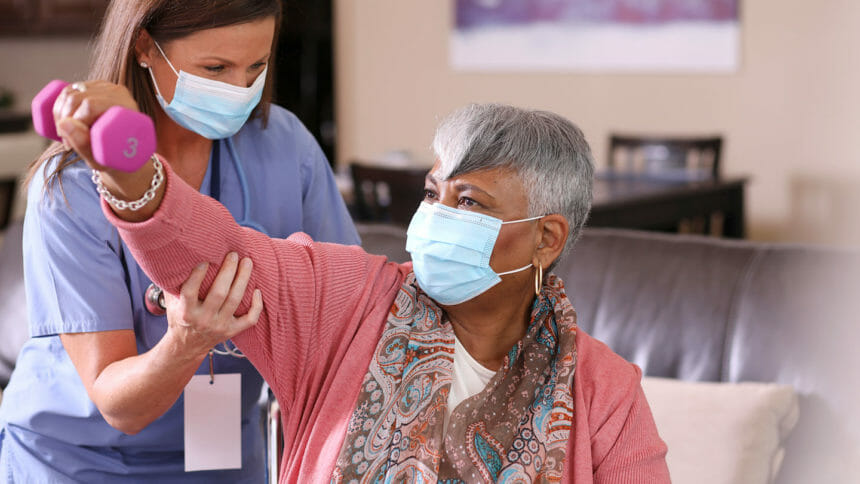
Nursing homes provided post-acute rehab services to residents during the pandemic that were comparable to pre-pandemic services although the amount of time spent in group therapy declined, according to a new study.
The research also found that those entering SNFs after a hospitalization were generally sicker with greater cognitive impairment and “higher baseline mortality risk.”
“So much has been made about the shortcomings of nursing homes during the pandemic, and while there are a lot of opportunities for [facilities] to improve, this shows they are getting some things right,” said Sarah Berry with the Hinda and Arthur Marcus Institute for Aging Research at Hebrew SeniorLife, one of the study authors. “We were surprised to see that despite the challenges and regulations, it was possible to do the group sessions and there wasn’t a drop-off in the intensity. It speaks to the strength and resilience of staff during that time.”
The study, published on JAMA Health Forum Friday, examined the therapy and stay records for 61,000 pre-pandemic patients and 47,500 pandemic patients, including all short-stay admissions of people who had a total residency of fewer than 100 days. The rehabilitation intensity dropped “modestly” by approximately a half-day on average, which represents approximately a 10% reduction in therapy from pre-pandemic levels. The study also noted that high staff turnover left fewer employees “for a sicker patient population.”
Residents received an average of 4.01 days of speech therapy, 5.17 days of occupational therapy, and 5.35 days of physical therapy pre-pandemic, compared to 3.62 days of speech therapy, 4.71 days of occupational therapy, and 4.86 days of physical therapy during the pandemic. Individual speech therapy increased slightly, from 33.76 minutes per day pre-pandemic to 34.51 minutes during it, but the time spent in group therapy decreased from 1.01 minutes to 0.11 minutes per day. All figures from the research are unadjusted mean.
Patients spent 44.7 minutes pre-pandemic in individual occupational therapy compared to 43.86 minutes during the pandemic and 44.83 minutes in physical therapy pre-pandemic compared to 43.7 minutes during the pandemic.
The greatest declines in rehab services were in group occupational and physical therapy sessions where residents received 2.87 minutes of OT per day pre-pandemic compared to 0.22 minutes per day during the pandemic and 3.04 minutes of PT per day pre-pandemic compared to 0.23 minutes per day during the pandemic.
“We went into this concerned that nursing home residents might not have been getting as much therapy and rehabilitation due to all the challenges of the pandemic,” Berry said. “I would hope [this research] gives people confidence that for patients who still need nursing-home level care, it’s still an OK option.”




